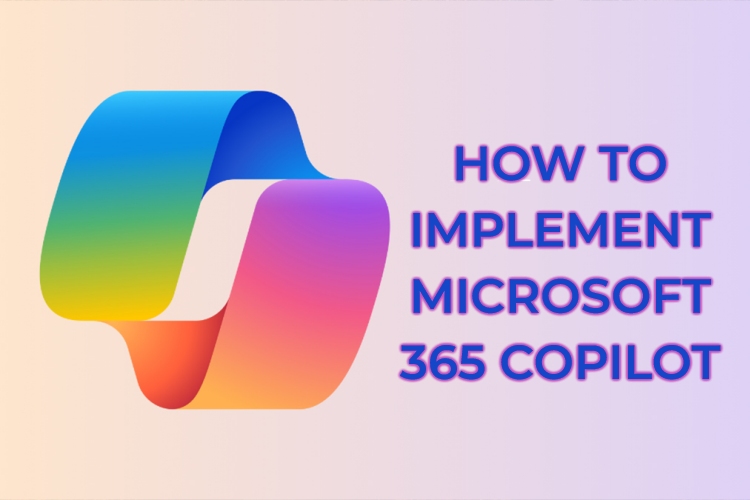Responsibility and Planning: The Role of Adoption Managers
To ensure a smooth transition to Copilot, companies must approach the adoption process with a clear strategy. One of the most critical steps is appointing an Adoption Manager, who will be tasked with overseeing the integration and driving the cultural shift within the organization. Rather than leaving the rollout to the IT department, which could create bottlenecks, it’s essential to identify the departments that would most benefit from Copilot’s efficiency gains—such as Finance, Operations, and Marketing—and allow them to lead the way in trialing the tool. When properly introduced, these departments can serve as champions for Copilot within the organization, fostering broader interest and usage. However, simply giving access to everyone is not the answer. Careful consideration must be given to which teams or individuals would most benefit from the tool. Ultimately, a comprehensive strategy is necessary, one that outlines clear goals for how Copilot will be used to streamline specific tasks or processes, leading to measurable productivity improvements. The key to success lies in starting small, building awareness, and allowing the benefits to unfold naturally.
Discovery: Ensuring Data is Ready for AI Integration
Before launching Copilot within a business, ensuring that the company’s data is organized and properly indexed is crucial. Copilot’s AI capabilities rely heavily on the ability to access relevant data, and if this data isn’t structured or readily available, the results will be subpar. One of the first questions a company must address is how they define sensitive data. This varies significantly between industries—for example, a healthcare provider may prioritize the protection of patient records, while a recruitment agency may focus on safeguarding personal identification information. Businesses should also make use of Microsoft’s built-in solutions, such as automatic data discovery tools and data loss prevention features, though these may require higher-tier licenses to function effectively. A useful starting point is to ask how problematic it would be if certain documents fell into the hands of a standard user, with a focus on departments like HR, Legal, and Finance, where the most sensitive data is often found. Companies need to review where this sensitive data resides, whether it is properly secured, and ensure that their policies regarding internal and external sharing of information are airtight. A thorough review of these sharing policies and access controls is essential to preventing unintentional data exposure.
Classifying and Managing Access to Data
To keep data secure and well-organized, businesses should adopt a straightforward classification system. Documents can be categorized as Public, Private, or Confidential, which will govern how they are shared both internally and externally. Public documents are accessible to everyone, both inside and outside the company. Private files are restricted to internal users, while Confidential documents are available only to specific, authorized individuals. Microsoft’s Information Protection Labels can simplify this process by automatically applying restrictions and encryption to documents based on their classification. Another important aspect of data security is the management of access rights. Businesses should avoid granting access to individual users whenever possible, opting instead to create access groups based on departments or job roles. This not only streamlines access management but also reduces the risk of human error. For example, a sales assistant may have access to general sales documents, but access to confidential files could be restricted to higher-level roles within the department. Regular reviews of access controls are necessary to ensure the right people have access to the right data, and adjustments should be made as roles or projects evolve.
Implementing Changes and Preparing for Full Adoption
Once a company has clearly defined its sensitive data and access controls, it’s time to implement these changes. This involves applying classification labels to high-priority data—such as that within the HR, Legal, Finance, and Customer areas—and updating access controls accordingly. In some cases, teams or users may need to be added or removed from specific groups, while in others, entire SharePoint sites or Teams channels might require reorganization. It’s also important to review and potentially revise the company’s document-sharing policies to align with the new data classification framework. Organizations must be wary of allowing unchecked proliferation of new Teams channels or sites, which can lead to inefficiencies or lapses in data security. Once the technical groundwork has been laid, awareness and training should follow. Employees, particularly those responsible for sensitive data, need to understand the new processes and adhere to them consistently. This is especially important given that Copilot will empower employees with more data access through tools like SharePoint, making it essential for everyone to follow best practices in data management and security.
Looking Ahead: Copilot’s Impact and Future Considerations
While Microsoft 365 Copilot promises to bring transformative benefits to organizations through the use of AI, businesses must proceed with caution. Copilot is not without its challenges—there will be technical glitches, and staff will need time to adjust to new workflows. Moreover, concerns about over-reliance on automation, the potential erosion of critical thinking skills, and worries about job displacement due to AI must be considered. That said, Copilot’s potential to handle complex tasks in seconds is unmatched, and businesses that approach its implementation thoughtfully are poised to see significant productivity gains. For companies unsure of how to begin, consulting with professionals who specialize in Copilot integration can be an excellent first step towards realizing the full potential of this powerful AI tool.



